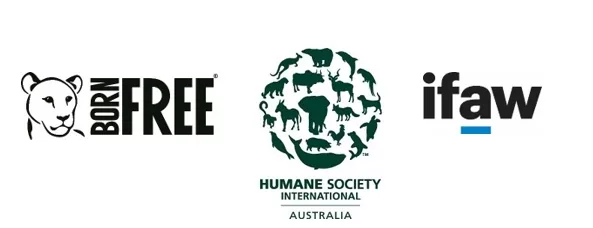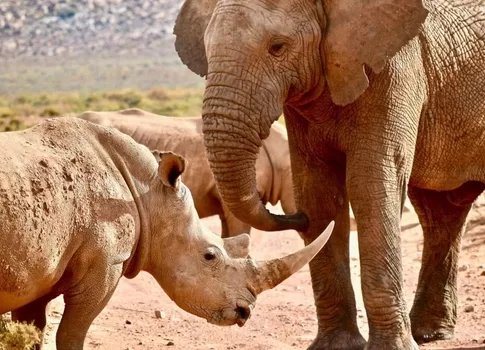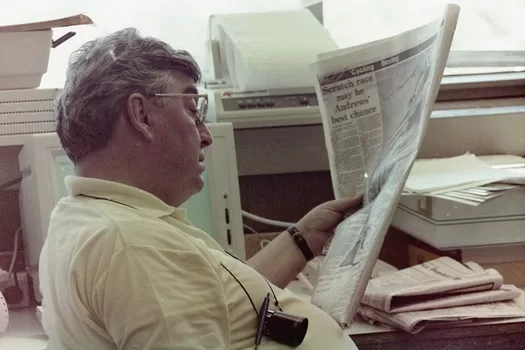The illegal ivory trade is one of the most pressing issues in wildlife conservation, a shadowy industry that has driven several species to the brink of extinction while funding organized crime and corruption across the globe. Despite international bans and widespread awareness, the demand for ivory continues to threaten the survival of elephants, rhinos, and other species with valuable tusks and horns. This blog explores the complexities of the illegal ivory trade, its devastating impact on wildlife, and the ongoing efforts to combat this illicit industry.
Advertisement:
The Scale of the Crisis
Ivory has been prized for centuries, used in art, religious artifacts, jewelry, and other luxury items. The demand for ivory surged in the 20th century, particularly in Asia, where it is often considered a status symbol. By the 1970s and 1980s, this demand had led to a catastrophic decline in elephant populations across Africa. In response, the international community, under the Convention on International Trade in Endangered Species of Wild Fauna and Flora (CITES), implemented a global ban on ivory trade in 1989.
While the ban initially led to a decrease in poaching, the illegal trade has persisted and even flourished in the black market. Estimates suggest that tens of thousands of elephants are still killed every year for their tusks, with the ivory being smuggled across borders and sold at high prices. The illicit trade is not limited to Africa; Asian elephants are also targeted, although to a lesser extent.
Impact on Wildlife and Ecosystems
The illegal ivory trade has dire consequences for wildlife populations. Elephants, being keystone species, play a crucial role in maintaining the health of their ecosystems. Their decline disrupts the balance of their habitats, affecting countless other species that rely on the same environments.
Moreover, the loss of elephants and rhinos threatens biodiversity and the stability of ecosystems. For instance, elephants are vital for seed dispersal, which helps maintain the diversity of plant life in their habitats. The loss of these large herbivores can lead to changes in vegetation and, subsequently, the species that depend on those plants for food and shelter.
The Human Cost
The illegal ivory trade also has a significant human cost. The profits from ivory trafficking often fund criminal networks, including terrorist organizations and armed militias. These groups use the money to purchase weapons, fueling violence and instability in regions already plagued by poverty and conflict.
Local communities, particularly those in Africa, suffer the most from the illegal ivory trade. Poaching often leads to the death of wildlife rangers and conservationists who risk their lives to protect endangered species. Furthermore, the loss of wildlife can devastate tourism, a vital source of income for many African countries.
Efforts to Combat the Trade
International efforts to combat the illegal ivory trade have intensified in recent years. Governments, NGOs, and international organizations are working together to strengthen anti-poaching laws, improve law enforcement, and raise awareness about the consequences of buying ivory.
One of the most significant developments has been the closure of domestic ivory markets in several countries, including China, the largest consumer of ivory. In 2017, China implemented a near-total ban on ivory sales, leading to a reported decline in demand. Other countries, including the United States, the United Kingdom, and Japan, have also introduced stricter regulations on ivory trade.
Technology is playing an increasingly important role in the fight against ivory trafficking. Forensic science is being used to trace the origins of seized ivory, helping authorities identify poaching hotspots and trafficking routes. Additionally, drones, satellite imagery, and GPS tracking are being deployed to monitor elephant populations and track poachers in real time.
The Role of Public Awareness
Public awareness is crucial in the fight against the illegal ivory trade. Consumers need to understand the impact of their purchases on wildlife conservation. Campaigns such as the “Ivory Crush,” where seized ivory is destroyed in public events, aim to send a strong message that ivory has no value if it comes from a dead elephant.
Education initiatives are also targeting younger generations, particularly in countries where ivory is traditionally valued. By instilling a sense of responsibility and respect for wildlife, these programs hope to reduce future demand for ivory and encourage support for conservation efforts.
Advertisement:
Australia Urged to Shut Down Domestic Ivory Trade on World Elephant Day
As World Elephant Day approaches on August 12, 2024, prominent wildlife organizations Humane Society International (HSI) Australia, the International Fund for Animal Welfare (IFAW), and the Born Free Foundation are calling on Australian governments at all levels to take decisive action against the domestic trade in ivory and rhino horn. Despite the global ban on international ivory trade, Australia still permits the sale of ivory and rhino horn within its borders—a loophole that threatens the survival of these iconic species.
Australia’s ongoing legal trade in elephant ivory and rhino horn poses a significant risk to wild populations, providing an avenue for poached ivory and rhino horn to enter the market legally. This loophole undermines global conservation efforts, particularly as African elephants and rhinos face critical population declines.
Over the last century, African elephants have lost 96% of their population, while rhino numbers have plummeted from 500,000 to just 27,000. Tragically, the western black rhino and northern white rhino are now extinct in the wild.
“Domestic markets stimulate and legitimize demand for ivory and rhino horn, encouraging the illegal killing to continue and edging these species closer to extinction,” said Dr. Megan Kessler, Nature Campaigner for HSI Australia. “It’s been nearly five years since all state, territory, and federal governments committed to banning domestic trade in ivory and rhino horn, but no action has been taken.”
Dr. Kessler’s concerns are echoed by other conservation leaders. Rebecca Keeble, Regional Director for Oceania at IFAW, pointed out that it has been six years since IFAW’s report, Under the Hammer, revealed the extent of ivory trade through Australian auction houses.
The report prompted a Parliamentary Inquiry that recommended banning Australia’s domestic ivory trade. “Many other countries, such as China and the UK, closed their domestic ivory markets years ago. It’s time for Australia to address this issue now,” Ms. Keeble stated.
Gabriel Fava, Senior Policy Advisor for the Born Free Foundation, emphasized that even though Australia is not traditionally associated with rhinos or elephants, closing the domestic market is a critical step in global conservation efforts. “The killing has continued since the 2019 commitment was made, and shutting down the trade should not be put off any longer. It’s time.”
To mark World Elephant Day, HSI Australia, IFAW, and the Born Free Foundation are urging governments across Australia to take The Elephant Pledge.
The Elephant Pledge
By taking The Elephant Pledge I commit that my government will:
- Give the Australian Government the power to enact national legislation that ensures a consistent and comprehensive ban on domestic trade in ivory and rhino horn across the country.
- Develop legislation in our jurisdiction to support this ban, where necessary.
- Work to deliver a comprehensive national domestic trade ban in ivory and rhino horn by next year’s World Elephant Day – 12 August 2025.
“Every year that we fail to ban domestic trade in ivory and rhino horn is another year where more elephants and rhinos are senselessly slaughtered,” Dr. Kessler emphasized. “We know that 75% of Australians already support us in this call. World Elephant Day is the ideal time for people to use their voice and call on our governments to support The Elephant Pledge.”
As Australia faces growing pressure to align with global conservation efforts, the coming year will be crucial in determining whether the country will step up to protect these endangered species. For more information about The Elephant Pledge, visit HSI Australia.
The illegal ivory trade remains a significant threat to wildlife and global security. While progress has been made in reducing demand and strengthening law enforcement, much work remains to be done. Protecting endangered species requires a collective effort from governments, conservationists, and the public. By raising awareness, supporting sustainable alternatives, and enforcing strict regulations, we can hope to preserve these majestic creatures for future generations.
The fight against the illegal ivory trade is not just about saving elephants and rhinos; it is about safeguarding our planet’s biodiversity and ensuring a future where wildlife thrives in its natural habitat, free from the threat of extinction.

Related stories
Fashion To Die For: Hermès crocodile farms in Australia
Photographer’s court battle over monkey selfie
Melbourne Fashion Week 2024 says No More Feathers
Advertisement:




